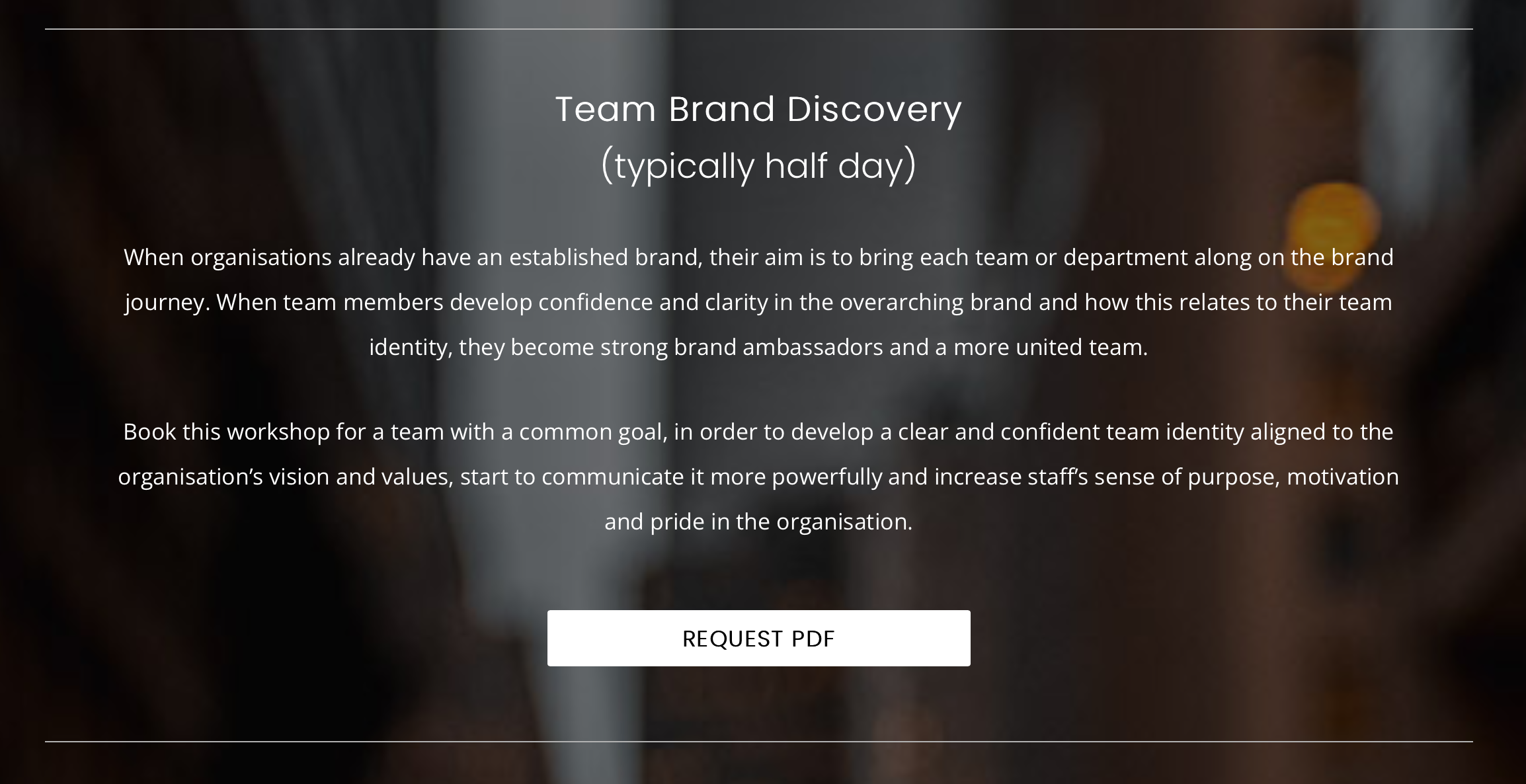5 Steps to Team Identities that build a strong Brand and Culture
Whether it’s a new or established brand, organisations want to bring each team or department along on the brand journey. They want staff to understand and authentically connect with the brand, in order to communicate it more powerfully and increase their sense of purpose, motivation and pride in the organisation. Connecting with the Brand is a central part of building a strong, values-aligned Culture – if it is tackled and communicated effectively across the organisation.
“Connecting with the Brand is a central part of building a strong, values-aligned Culture – if it is tackled and communicated effectively across the organisation.”
When team members develop confidence and clarity in the overarching brand messages and how these relate to their team’s identity, they become strong brand ambassadors and a more united team.
What steps should Leaders take to build Team Identities aligned with Brand and Culture?
Below: Working with FINSIA’s Team & Councils at the Council Leaders’ Forum, Sydney, February 2023

Step 1: Understand the Brand-Culture Connection.
A Culture that is driven from strong Brand Messaging – including, at its core, meaningful Purpose, Vision and Values, as well as clear market positioning, point of difference and value proposition – is a Culture that has clear and tangible signposts, and a common language to describe it. First getting clear at Leadership level, then involving all staff in the conversation about Brand Messaging and its flow-on effect to organisational Culture, are essential steps to establish a firm and useful connection between the two.
Step 2: At Team Level, develop a shared sense of organisational Purpose and meaningful Values.
Do this by exploring how the organisation’s Purpose and Values relate specifically to each team. This should include a detailed look at how these play out in team members’ day-to-day work, including understanding what should be celebrated and what needs improvement in demonstrating visible Purpose and Values in action.
Step 3: Give each Team the opportunity to formulate their own Unique Value Proposition and ‘Elevator Pitch’.
How do they talk about their work, the value it brings to stakeholders, and its connection and impact on the organisation as a whole? When team members can identify with and articulate their Value Proposition, they feel more confident and motivated to step up and achieve more, and they set the tone for the Culture of the organisation.
Step 4: Build awareness of how the Brand is expressed…
…in planned and unplanned ways, online and offline, to internal and external audiences. Within each team, generate in-depth discussion to pinpoint strengths, problem areas and blind spots, and share this with the rest of the organisation. Your staff want to do a great job representing the brand – but far too often, they don’t know how to do that.
Step 5: Loop your analysis and exploration at Team level back into Organisational Planning…
…while ensuring knowledge is shared between stakeholder groups across the business.
While some of these steps may sound familiar, they involve complex systems and human interaction, which can leave many leaders feeling lost as to how to tackle some or all of the steps. Utilising simple and clear frameworks for measurement, exploration and ideation, and to then communicate outcomes, is essential to success; if these don’t exist within your organisation it is well worth investing the resources in outside expertise, to ensure impactful results.

